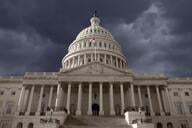You have /5 articles left.
Sign up for a free account or log in.
These pages and the blogosphere have been abuzz about Academically Adrift, a new book that shows learning among college students is alarmingly limited. Numerous parties should be troubled by these findings, if for no other reason than the data question the impact of the teacher on the student, and the role of the administrator in ensuring that learning is taking place.
In full disclosure, I have not yet read the book, and look forward to doing so, even if the sobering findings make me challenge what I do and how.
As a dean, I have been asking faculty to question what they do, and how they do it. This process has been enlightening for all of us. Change is hard to execute, not always rewarding, and sometimes leads to substandard outcomes. We like our worlds neat and tidy. The slightest disruption, or even use of language to suggest that messy and unpredictable is inevitable, is met with confusion or derision.
We should not be criticized for this mindset. I too find myself desiring concrete answers all the time. As a dean, I want to know exactly what my budget is, and when it will be determined. I would prefer flexibility in some arenas (e.g., curricular), but would just as soon others determine which classes meet when and where.
Tidy may be comforting, but it is also banal, boring, conventional and unrealistic. That’s why I have been asking faculty to infuse their classes with the element of surprise. By surprise I do not mean mysteriously taking a rabbit out of a hat, but rather incorporating experimental, untidy open-ended exercises in their classes.
This request is not an arbitrary one. To the contrary, it germinates from a belief that the liberal arts and sciences, and the students who take such courses, often thrive by appreciating complex questions that do not have easy answers. Precisely because students can retrieve facts instantaneously at their finger tips, I am asking faculty to revise their syllabuses to discuss and, yes, teach, ambiguity.
Teaching ambiguity may make students more employable, and civically engaged. Civic engagement has become a fashionable buzzword in the higher education lexicon. We embrace it largely because we assume that it is intertwined with cultivating democratic values. But representative democracy comes in many flavors.
There are, for example, theoretical and empirical tensions between freedom and equality. There are flaws intrinsic both in plebiscitary democracy, where citizens vote for the color of each school house, and elitist republicanism, where elected officials are entrusted with all policy decisions, large and small. There are no answers to these tensions; they are part of the evolving, democratic experiment.
The question for educators is how to teach our students to think about these tensions as valuable and fluid. Doing so will serve two purposes. First, it will allow our students’ creative juices to flow in new and novel ways. Second, it may help our students engage and tackle complex social and political issues after they leave college.
Civic engagement is more than knowing what a quorum call is. In the age of Google and Wikipedia, any student with a phone can find the answer. What is too often missing, both in the K-12 and university classroom, is an understanding of the abstract and the ambiguous. How do we enhance our students’ abilities to appreciate complexity – in government, literature, the fine arts and sciences?
There is no one formula for bolstering civic engagement – however it is defined – on campus or in the halls of legislatures. But if we believe in the merits of the liberal arts, then we should embrace the ambiguous as worthy of scholarly and intellectual exploration.
Why not assign Robert Frank photographs in political science 101, or The New York Times in an English composition class? How about if we gave fewer multiple choice exams and more open-ended essays? Formulating ideas, or even one good idea, is no easy task. It requires time, a willingness to fail, and unbounded patience. As teacher-scholars, we are struggling ourselves with how we study and how we process what we discover.
This quarter I am co-teaching a class titled “Political and Photographic Representation.” Half of the classes are taught by a photographer. She assigns reading by Susan Sontag and Roland Barthes. My half discusses political representation; we read Hanna Pitkin’s seminal work on the topic, and Martin Wattenberg’s Is Voting for Young People?, among other texts.
The result? It’s too early to say. We hope that our students appreciate the complexity of what representation is and how to explain it. We want them a bit confused and awed by the literature that explores these questions. Already we have seen some thoughtfully constructed analyses and photographs, suggesting that this experiment is worth repeating.
I already hear the critics. He’s a relativist who is implicitly promoting mushiness! The classroom will devolve into a chat fest about feelings, and not about rational thought. Beware of the slippery slope! Taken to its logical extreme, he is advocating for students to be devoid of facts! Or perhaps the opposite criticism will be mounted: He’s trying to turn all students into rational, hypothesis testers. He values probabilistic thinking at the expense of emotion and irrationality.
These criticisms miss the point. We are drowning in data. We need to figure out how to digest the facts that are subsuming us. We can locate the poverty rates of virtually any major city, but eradicating poverty remains a pipe dream. Mitigating poverty is in the realm of the possible, under certain circumstances, most of which are fluid. Our students need to learn about the fluidity as well as the concrete; the arts can and should play a role in that ambitious task.
In a political science research methods class I taught for over a dozen years, I forbade students from using the verb “prove.” Prove was too clean, too stark and too overreaching for the social sciences. Instead I asked them to use words like “demonstrate,” “reveal” and “indicate.” Yet even the best students occasionally snuck the “P” word into their oral and written assignments, not as an act of rebellion, but because, I believe, they sought to codify and clarify with confidence and conviction. Over time, these students learned about the power of probabilities, and that their words – prove, show, suggest – have meaning and power as well.
Facts are important, and should not be dismissed as irrelevant. But teaching only facts, especially in an age when they are so easily retrievable, without the complex contexts of the unknown, may leave our students more disengaged from and uninterested in the world around us. Teaching ambiguity may or may not make our students more civically engaged, or more likely to score higher on standardized tests.
But we live in ambiguous times. Today’s and tomorrow’s students should be prepared to engage in a world where societal problems do not necessarily have definitive solutions. Economic insecurity, wars in remote places and accelerating technological changes make us yearn for certainty. Perhaps our best response to the fluidity that surrounds us is to teach our students what ambiguity is, and how to appreciate it.




